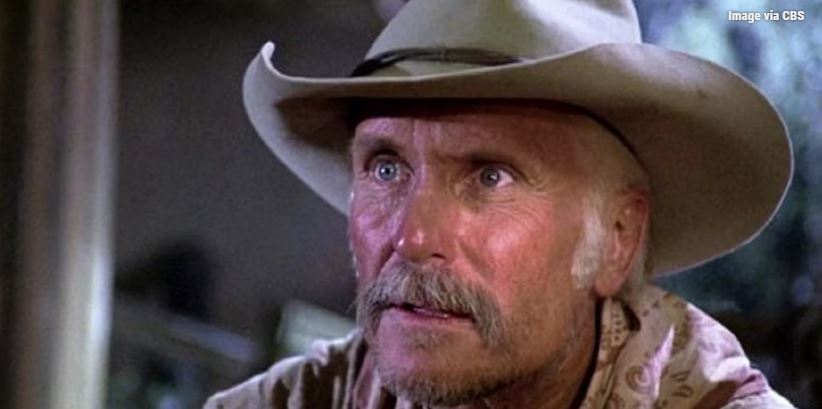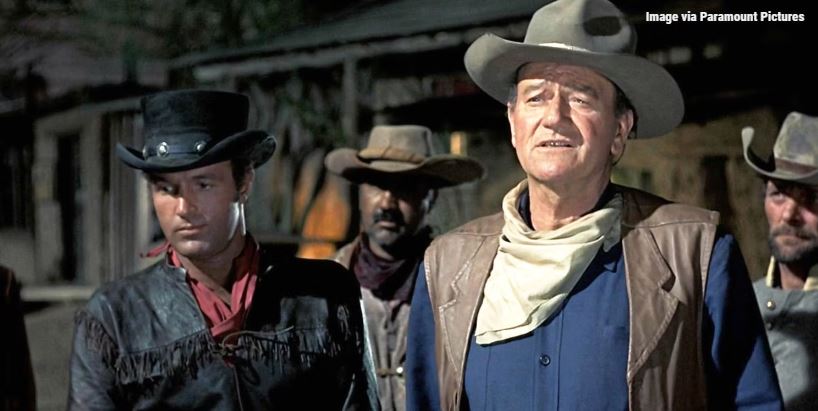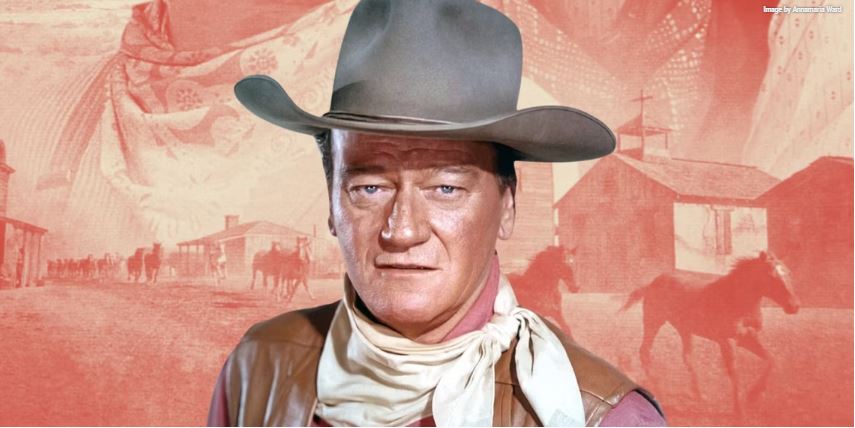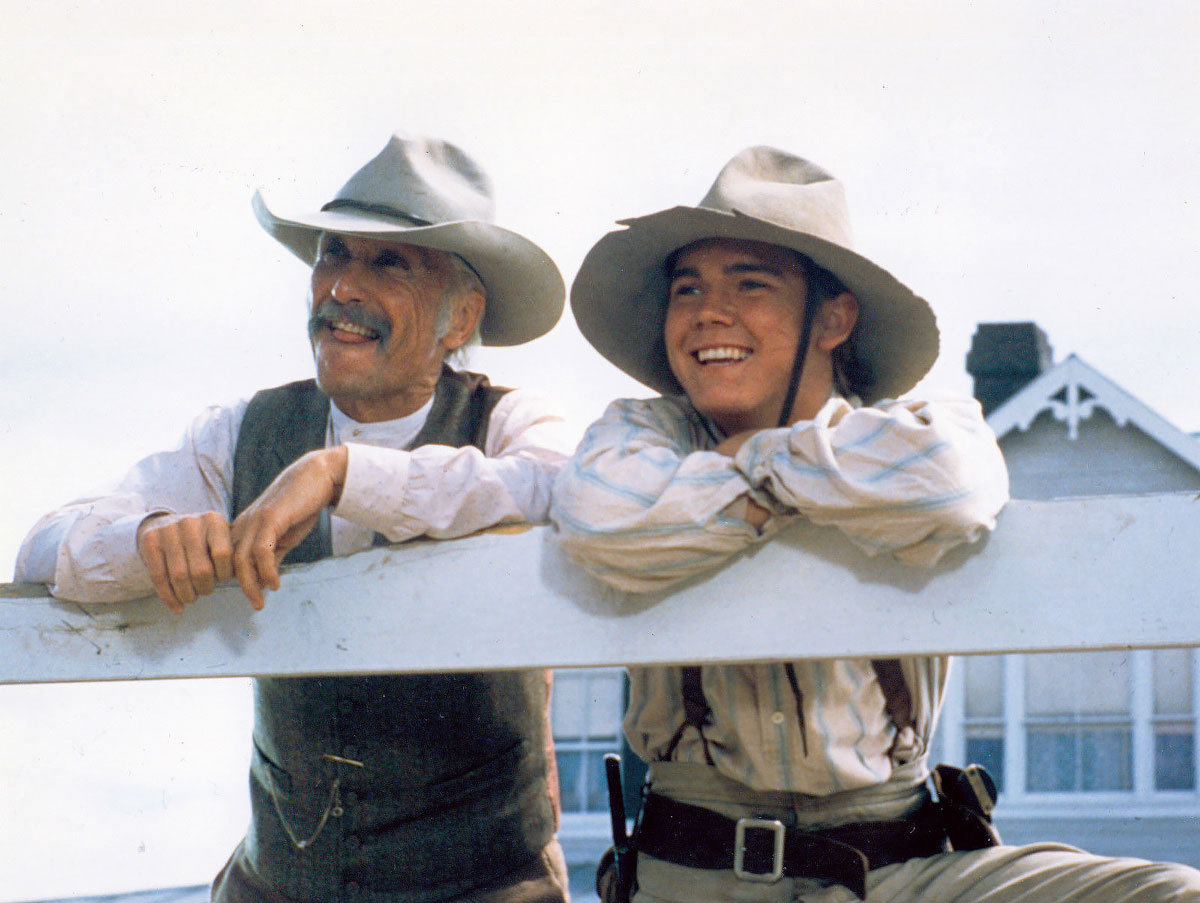Author Larry McMurtry holds a distinct honor when it comes to movies. As of now, he is the only person to have one of his works be adapted into an Academy Award-winning screenplay (Terms of Endearment, adapted by James L. Brooks) and win the Academy Award himself for adapting another author’s work (Brokeback Mountain, adapted by McMurtry and Dianna Ossana from the short story by Annie Proulx.) While McMurtry is known as an author first and foremost, his career has intersected with Hollywood from very early on. His first book, Horseman, Pass By became the Paul Newman film Hud, and later his novel The Last Picture Show was made into a movie of the same name, securing huge Oscar success and launching the careers of Cybill Shepherd, Jeff Bridges, and director Peter Bogdanovich. With so many great movies starting as books by Larry McMurtry, it’s poetic that his crowning literary achievement, Lonesome Dove, started its life as a movie first.
What Is ‘Lonesome Dove’ About?

Lonesome Dove is a grand Western epic that follows two retired Texas Rangers embarking on a cattle drive from the Mexican border in Texas all the way to the Canadian border in Montana. It is a journey that seems daunting, not only for the rangers and their ragtag crew but also for any reader as Lonesome Dove is a phonebook thick tome with the paperback reaching nearly a thousand pages. The length did not stop the book from becoming a hit though, as many audiences are still unable to resist the entertainment throughout the journey grounded by unexpected hardships and heartbreak. Lonesome Dove went on to win the Pulitzer Prize in 1986 and was quickly adapted into a major miniseries starring Robert Duvall, Tommy Lee Jones, Danny Glover, Diane Lane, and Angelica Houston. None of this would have happened though if John Wayne had wanted to make the movie.
How the Idea for ‘Lonesome Dove’ Began
The Last Picture Show was a huge critical success. The film received eight Academy Award nominations, including one for Larry McMurtry himself as co-writer of the screenplay, and launched Bogdanovich’s career leading to high-profile follow-ups What’s Up, Doc? and Paper Moon. And while McMurtry would return to novel writing, subsequently publishing two of his most beloved works Terms of Endearment and All My Friends are Going to Be Strangers, he wasn’t done with Hollywood yet.
As carefully detailed in a Texas Monthly oral history, after The Last Picture Show Bogdanovich recruited Larry McMurtry to write a script with him for a Western. Likely, as a student of film history, a Western appealed to Bogdanovich, so he convinced Warner Bros. to pay him and McMurtry to develop the would-be feature film. Discussions began when McMurtry and Bogdanovich accompanied Cybill Shepherd (who had formed a relationship with Bogdanovich during the filming of The Last Picture Show) to Miami for the filming of the Elaine May masterpiece The Heartbreak Kid. The initial ideas were general: they wanted it to be a trek, but not a cattle drive (to avoid comparisons to Red River,) Bogdanovich wanted to include a pair of Irish folk singers, and eventually the title “Streets of Laredo” was decided on, but the main driving force that shaped the story was the cast they wanted.

From the outset, Bogdanovich told McMurtry he wanted the Western film legends John Wayne, Jimmy Stewart, and Henry Fonda in addition to a part for his girlfriend Cybill Shepherd. As McMurtry and Bogdanovich started working on pages the characters began to form around these actors and their personas. For Stewart, they wrote a more light-hearted character more connected with the land that they named Augustus because, as Bogdanovich puts it, “we liked the way Jimmy Stewart would say, ‘Augush-tush.'” Inspired by his aloof nature, Henry Fonda’s character was morally ambiguous and not exactly clear where his loyalties lie (in the novel this would become Jake Spoon.) John Wayne’s character was set to be the more in charge and closed-off frontiersman (the earliest version of Woodrow Call,) and while not confirmed it would not be a surprise had Cybill Shepherd played some version of what would become Lorena Wood, the young blonde prostitute brought along on their journey. When the draft was sent off, the studio received it warmly, unfortunately, the actors were not so eager.
The Original ‘Lonesome Dove’ Script Was Rejected

Streets of Laredo was initially rejected by Wayne, Stewart, and Fonda despite the pedigree Bogdanovich and McMurtry had after The Last Picture Show. Much of Streets of Laredo dealt with the characters aging. This version of the story would have Wayne and Stewart starting off as pig farmers with little to do but make conversation on the porch, one of those conversations being Stewart “complaining about how long it takes to pee when you get older.” In his third memoir, Hollywood, McMurtry theorized that none of the stars they reached out to wanted to play the faded versions of the heroes they once brought to life, but none so more than John Wayne.
Stewart and Fonda eventually acquiesced, as work was beginning to dry out for them in the 1970s, but Wayne was less in need. Wayne, not far off from his long-awaited Oscar win for True Grit, was still working regularly as a leading man and keeping a traditional sort of Western alive. “John Wayne wasn’t going to lend himself to a total critique of the genre he had been working in for forty years. He wasn’t going to make Blazing Saddles,” said English professor Don Graham in the Texas Monthly oral history. Without Wayne on board, the project never came to be. But this wasn’t the end for McMurtry.
When Did Larry McMurtry Turn ‘Streets of Laredo’ into ‘Lonesome Dove’?
After twelve years and a few more books under his belt, McMurtry decided to buy the rights to Streets of Laredo for $35,000 feeling it might make a decent novel. He stopped and started for a few years, taking breaks to write Cadillac Jack and The Desert Rose, only getting the engine going after a moment of divine inspiration: finding the title. While McMurtry would use Streets of Laredo for the sequel’s title, it was a passing bus advertising a local “Lonesome Dove Church” that gave him the clarity he needed to finish what would become the book. The manuscript reached 1600 pages but became a quick success, not only with its accolades but with the general public, spending about a year on the bestseller list when factoring in both the hardcover and paperback editions.
Peter Bogdanovich may have made a great Western out of the script for Streets of Laredo, but he doesn’t seem too upset to have missed out. “I read it in one week and thought it was brilliant. I felt it was written almost in vengeance to show that novels can do anything better than a movie,” also said Bogdanovich in Texas Monthly. And while McMurtry, before his passing, considered his book to be somewhat of a failure, likening it to Gone With the Wind, and ultimately romanticizing the mythos of the Old West, it is likely his most remembered work. Hollywood has crazy ups and downs, with many projects starting one way and ending up another. In this case, it was for the best. While John Wayne’s ego may have robbed audiences of a movie with not just him and Jimmy Stewart, but Henry Fonda and Cybill Shepherd too, those who seek out the novel Lonesome Dove are not likely to be sorry.
